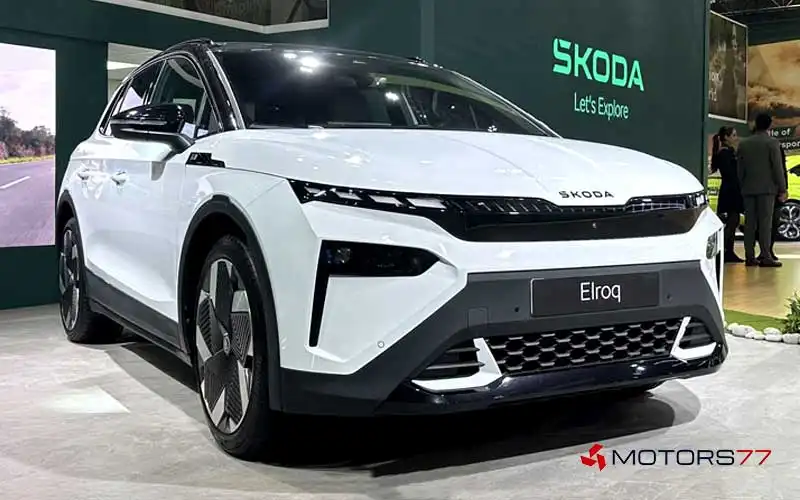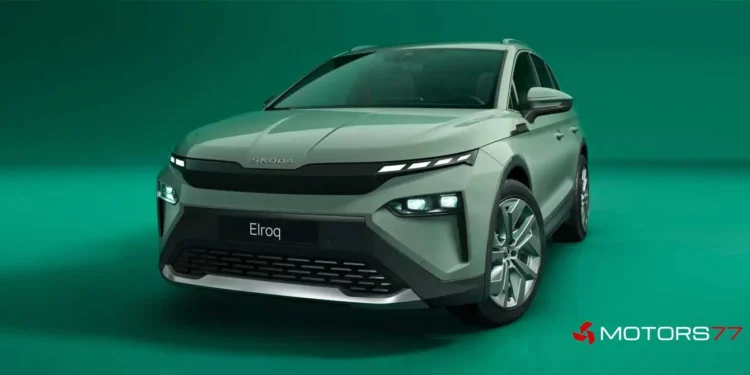Skoda Auto India is gearing up for a major electric transformation — but unlike most automakers rushing into the EV race, the Czech manufacturer is taking a measured and strategic path.
The company has confirmed that its first electric SUV for the Indian market will arrive between 2027 and 2028, signaling a shift from its earlier plans to launch much sooner.
A Strategic Shift in Timeline
In early 2025, Skoda had hinted at bringing its first electric vehicle to India by the end of the year. However, after months of evaluation, the company has decided to delay the project to 2027–28.
According to Ashis Gupta, Brand Director of Skoda Auto India, the revised timeline will allow the company to strengthen its local supply chain and take advantage of India’s evolving EV infrastructure.
“Our focus is not to be first, but to be right. By 2027, we expect a more mature EV ecosystem with local suppliers, charging infrastructure, and cost advantages,” said Gupta.
The timing also aligns with India’s stricter Corporate Average Fuel Efficiency (CAFE) norms, set to be implemented in 2027. These regulations will push all automakers to adopt cleaner, more efficient technologies — making Skoda’s electric entry perfectly timed.
Localization Over Imports
Rather than following the quick-entry route of importing high-end EVs, Skoda is prioritizing localization.
The company plans to build an India-specific electric SUV platform, focusing on affordability, practicality, and local manufacturing.
This move is part of a broader Volkswagen Group strategy to establish a localized EV supplier ecosystem in India, including partnerships for battery packs, charging components, and electric motors.
Benefits of the localization-first approach:
- Lower pricing by avoiding import duties
- Better after-sales support through local part availability
- “Made for India” engineering — tuned for local road conditions and weather
- Stronger alignment with government “Make in India” initiatives
Skoda CEO Klaus Zellmer has confirmed that the upcoming EV will be “designed and built in India for Indian buyers.”
This approach mirrors what’s already working for competitors like Tata Motors, whose localized EV strategy has paid off handsomely.

Affordable Electric Mobility — The Under ₹10 Lakh Ambition
Perhaps the most exciting part of Skoda’s EV roadmap is its target pricing. Reports suggest the company is working toward an entry-level electric SUV priced under ₹10 lakh, which would make it one of the most affordable EVs in India’s mass market.
This strategy could completely reshape the electric landscape, where most SUVs — such as the Tata Nexon EV, Mahindra XUV400, and MG ZS EV — start at ₹15–25 lakh.
If Skoda succeeds, it could become the first global automaker to offer an affordable electric SUV in India, competing directly with domestic brands on both performance and price.
Such pricing will only be possible through deep localization — assembling batteries, electronics, and body components within India — while leveraging the VW Group’s global EV expertise.
The Enyaq iV Takes a Back Seat
The Skoda Enyaq iV — a global EV based on Volkswagen’s MEB platform — was initially considered for the Indian market. However, importing the model would have pushed its price tag to nearly ₹50–60 lakh, putting it far beyond Skoda’s core target audience.
Globally, the Enyaq iV features a 77 kWh battery, all-wheel-drive powertrain with 265 hp, and a 340 km range. While technically impressive, it would have struggled to find mass appeal in India’s cost-sensitive market.
By sidelining the Enyaq in favor of a localized electric SUV, Skoda has made a calculated decision to focus on volume rather than vanity.
Market Context: A Fast-Changing EV Landscape
India’s electric vehicle market is witnessing unprecedented growth:
- Over 1.5 million EVs were sold in FY2024–25, up 70% year-on-year.
- The two-wheeler EV segment leads adoption, but four-wheelers are quickly catching up.
- Government incentives and falling lithium-ion battery costs are driving consumer interest.
With major players like Tata, Mahindra, Hyundai, and MG already well-established in the space, Skoda’s delayed entry might appear late — but strategically, it’s designed to capture a more mature market by 2027, when EV infrastructure will be wider and battery technology cheaper.
By then, India’s charging network is expected to cross 100,000 public fast chargers, and multiple cities will have fully operational EV corridors.
Skoda’s Current Portfolio and Market Strength
Skoda currently sells four models in India — Kushaq, Slavia, Kodiaq, and Kylaq — all of which have contributed to the company’s strong 2025 performance.
Between January and September 2025, Skoda sold around 53,000 units, showing healthy growth amid a competitive SUV segment.
The automaker has also expanded its sales and service footprint to 315+ touchpoints, with plans to cross 350 by 2026, improving accessibility across Tier-2 and Tier-3 cities.
This growing network will provide a strong foundation for the EV rollout.
Challenges on the Road Ahead
While Skoda’s strategy is sound, the road to 2027 isn’t without hurdles:
- Battery Localization:
India still depends heavily on imported battery cells. Skoda must collaborate with local suppliers or establish in-house assembly to control costs. - Charging Infrastructure:
Public EV charging is improving but remains concentrated in metros. Wider coverage across highways and smaller towns will be essential. - Price Sensitivity:
Achieving a sub-₹10 lakh price for an electric SUV will be difficult unless raw material costs and battery prices drop significantly. - Competition:
By 2027, Tata and Mahindra are expected to have second-generation EV platforms ready, raising the bar for newcomers.
Despite these challenges, Skoda’s patient, localization-led approach could turn into a long-term advantage.
The Road Ahead
Skoda’s electric future in India represents a bold, forward-looking strategy that balances innovation with realism.
Instead of chasing the “first mover” title, the brand is building the infrastructure, supplier ecosystem, and affordability framework necessary to succeed in the world’s most price-sensitive auto market.
For Indian buyers, the wait might be longer — but the reward could be a locally made, affordable, and high-quality electric SUV perfectly suited to Indian roads.
If Skoda executes its plan well, it could set a benchmark for how global automakers should approach India’s next automotive revolution.
Quick Facts
- Launch Timeline: 2027–28
- Target Price: Under ₹10 lakh
- Strategy: 100% localization focus
- Expected Model: New India-specific electric SUV (not Enyaq)
- Current Sales: 53,000 units (Jan–Sep 2025)
- Market Focus: Urban and semi-urban EV buyers
Motors77 Take
Skoda’s move may seem slow, but it’s smart. By waiting for EV infrastructure, lowering production costs, and investing in local supply chains, the brand is avoiding the pitfalls that early entrants faced.
If the 2027–28 electric SUV delivers on its affordability and practicality promises, Skoda could become a key player in India’s mainstream EV revolution — not just another premium niche player.










